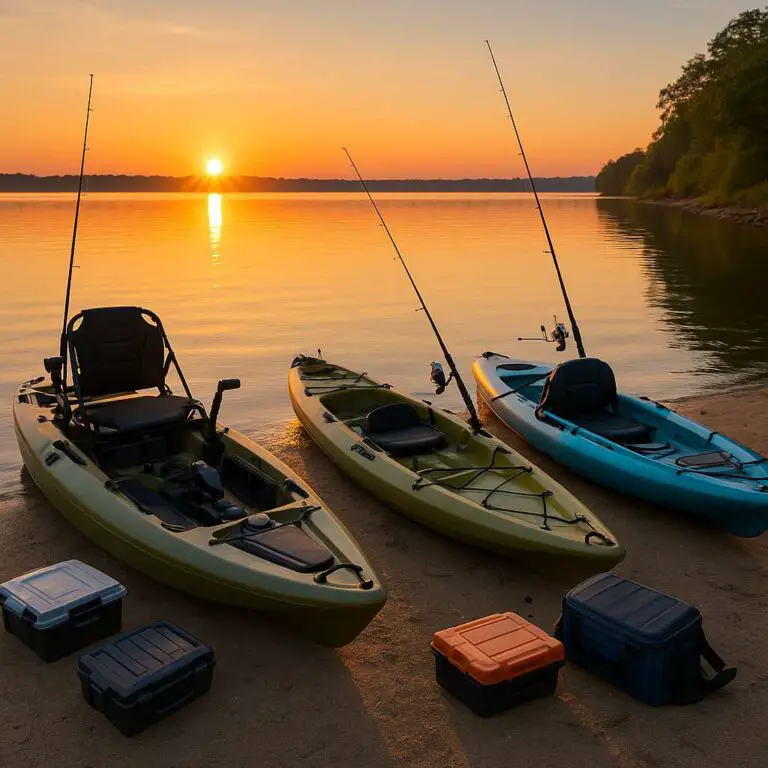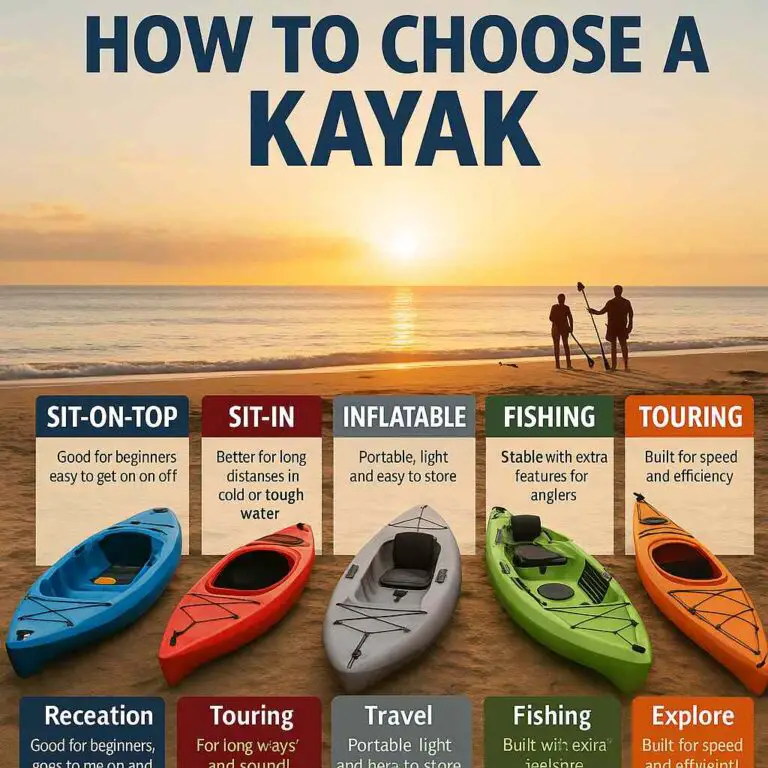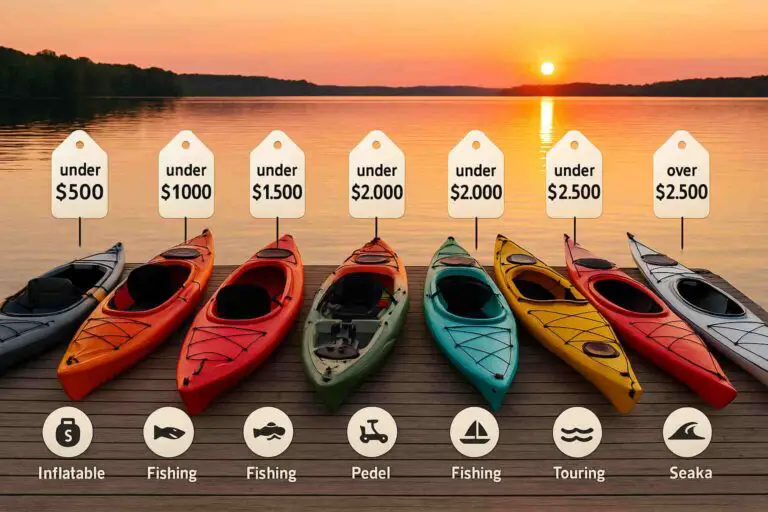Kayaking is a popular outdoor activity enjoyed by people of all ages and skill levels. One of the most important factors that can impact your kayaking experience is having the right paddle size. Choosing the right paddle size can affect your performance on the water and reduce the risk of injury.
In this article, I will provide you with a complete guide to kayak paddle sizing. You will learn how to measure paddle length and width, how to choose the correct kayak paddle size based on your body type, and factors to consider when selecting one. Additionally, I will cover how to test your paddle and provide tips for maintenance and care. By the end of this guide, you will have the knowledge you need to select the best paddle size for your kayaking adventures. Let’s dive in!
Understanding Kayak Paddle Sizing
Kayak paddle sizing is an important aspect of your kayaking experience. Using a paddle that is too short or too long can impact your ability to control your kayak and increase the risk of injury. Here are some important things to consider when it comes to understanding kayak paddle sizing:
Measuring paddle length
- Paddle length for high-angle paddling: High-angle paddling involves a more aggressive stroke and a higher cadence. The recommended paddle length for this style of paddling is shorter, typically between 190cm to 200cm.
- Paddle length for low-angle paddling: Low-angle paddling involves a more relaxed stroke and a lower cadence. The recommended paddle length for this style of paddling is longer, typically between 210cm to 240cm.
Measuring paddle width
- The width of the paddle blade can also impact your paddling experience. The width of the blade can affect your ability to maneuver your kayak and control your stroke. Most paddle blades range in width from 6 to 8 inches.
Choose the right paddle size based on your body type.
- Height: As a general rule of thumb, taller people require longer paddles, while shorter people require shorter paddles.
- Arm span: Your arm span can also impact the paddle length you need. Measure the distance between your fingertips with your arms stretched out to the side and add 10-12 inches to determine your ideal paddle length.
- Torso length: A person with a longer torso may require a longer paddle to compensate for the additional height above the waterline.
- Shoulder width: The width of your shoulders can also impact the paddle size you need. A wider shoulder width may require a longer paddle to ensure you have enough leverage to control your kayak.
kayak paddle sizing chart
Here is a general kayak paddle sizing chart to help you determine the appropriate paddle length based on your height, paddling style, and other body measurements:
| Kayaking Style | Height | Paddle Length (cm) |
|---|---|---|
| High-angle paddling | Under 5’4″ (162 cm) | 190-200 cm |
| 5’4″ – 5’8″ (162-172 cm) | 195-205 cm | |
| 5’8″ – 6′ (172-183 cm) | 200-210 cm | |
| Over 6′ (183 cm) | 205-215 cm | |
| Low-angle paddling | Under 5’4″ (162 cm) | 210-220 cm |
| 5’4″ – 5’8″ (162-172 cm) | 215-225 cm | |
| 5’8″ – 6′ (172-183 cm) | 220-230 cm | |
| Over 6′ (183 cm) | 225-240 cm |
It’s important to note that these measurements are a general guideline and may not apply to everyone. It’s recommended to also consider your arm span, torso length, and shoulder width when selecting a paddle size. And it’s best to try out different paddle sizes before making a purchase to ensure the most comfortable and efficient fit.
Factors to Consider When Choosing Kayak Paddle Size
When choosing a kayak paddle size, there are several important factors to consider:
Paddles are typically made from a variety of materials, including fiberglass, carbon fiber, and wood. Each material has its own unique set of properties that can affect the weight and stiffness of the paddle.
- Fiberglass: Fiberglass paddles are durable and affordable, making them a popular choice among beginner paddlers. They are also lightweight and have a moderate level of stiffness.
- Carbon fiber: Carbon fiber paddles are the lightest and stiffest paddles available. They are popular among experienced paddlers who prioritize performance and speed.
- Wood: Wood paddles are heavier and less durable than fiberglass or carbon fiber paddles but are often prized for their aesthetic appeal.
Paddle blade size and shape: The size and shape of the paddle blade can also impact your paddling experience.
- High-angle paddling blades: Blades that are wider and shorter are recommended for high-angle paddling. They provide more surface area for a powerful stroke and a quicker cadence.
- Low-angle paddling blades: Blades that are longer and narrower are recommended for low-angle paddling. They require less effort to paddle and are ideal for longer paddling trips.
- Paddle weight: The weight of the paddle can also impact your paddling experience. Heavier paddles can lead to fatigue and increase the risk of injury over time. Choosing a lightweight paddle can help you conserve energy and improve your overall performance.
- Price: Paddles can range in price from under $50 to over $500. While price should not be the only factor you consider when selecting a paddle, it is important to choose a paddle that fits within your budget and meets your specific needs.
How to Test Your Kayak Paddle
Testing your kayak paddle is an important step to ensure that you have selected the right size and style of paddle for your kayaking adventures. Here are some steps you can take to test your kayak paddle:
Testing the paddle in the water:
- Proper hand placement: The correct hand placement on the paddle can impact your paddling experience. Make sure your hands are placed on the paddle in the correct position and that your grip is comfortable.
- Stroke technique: Experiment with different stroke techniques and observe how the paddle performs in the water. Pay attention to the ease of paddling and how much control you have over your kayak.
- Comfort level: Make sure the paddle is comfortable to use and does not cause any discomfort or pain during use.
- Adjusting the paddle size as needed: If you find that the paddle is not the right size or style for your paddling needs, you may need to make adjustments. Consider trying a different size or style of paddle and repeat the testing process until you find the paddle that is the best fit for your needs.
It is important to test your kayak paddle in a safe and controlled environment, such as a calm lake or river, to avoid any potential accidents. Additionally, make sure to wear proper safety gear, such as a life jacket, when testing your paddle in the water.
Maintenance and Care for Your Kayak Paddle
Proper maintenance and care can help prolong the lifespan of your kayak paddle and ensure it continues to perform optimally. Here are some tips for maintaining and caring for your kayak paddle:
Cleaning your paddle
- Rinse your paddle with fresh water after each use to remove any salt or debris.
- Use a mild soap and water solution to gently clean your paddle as needed.
- Avoid using harsh chemicals or abrasive cleaning tools, which can damage the paddle.
Proper storage techniques
- Store your paddle in a dry, cool place away from direct sunlight.
- Avoid storing your paddle in areas with extreme temperatures or humidity levels.
- Store your paddle in a padded bag or case to protect it from scratches and dings.
Repairing your paddle
- Minor repairs: If your paddle has minor scratches or dings, you can use sandpaper to smooth out the surface and touch up the area with matching paint or epoxy.
- Major repairs: If your paddle has major damage, such as cracks or breaks, it may need to be professionally repaired or replaced.
Conclusion
Choosing the right kayak paddle size is crucial for a successful kayaking experience. By understanding how to measure paddle length and width, and how to choose the correct kayak paddle size based on your body type, you can ensure that you have a comfortable and efficient paddling experience.
Factors such as paddle materials, blade size, shape, weight, and price should also be considered when selecting a paddle. Testing your paddle in the water and adjusting the size or style as needed can help you find the perfect fit.
Finally, proper maintenance and care can help prolong the life of your paddle and keep it performing optimally. By following these guidelines, you can select a kayak paddle that meets your specific needs and enjoy your kayaking adventures with confidence.
You might be interested in reading my kayaking safety guide.




